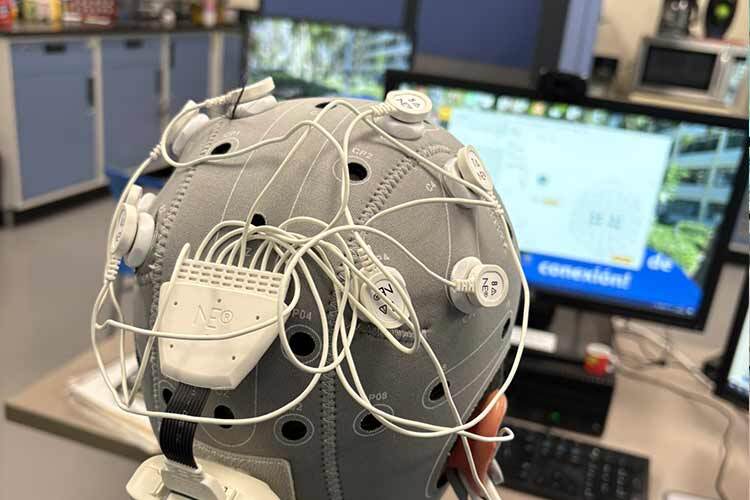The COVID-19 pandemic has been one of the most difficult events humanity has faced in recent times. In its wake, it radically impacted all aspects of human life.
However, despite the fact that there were many difficulties during it, scientific research did not stop. Some even dedicated their efforts to studying what changed with it and what teachings it left behind.
In an interview with TecScience, researchers José Navarro Partida and Adán Silverio Murillo shared the results of their studies in which they analyzed the effect of the pandemic in different spheres.
After the pandemic, fewer marriages
In social terms, COVID-19 had many effects. Among them were an increase in social isolation, the loss of jobs, and the increase in domestic violence.
In a study published in April 2023, a group of researchers that included Silverio Murillo, a research professor at Tec de Monterrey’s School of Government and Public Transformation, studied the effect of the pandemic on marriages and divorces in Mexico.
Analyzing administrative data from the National Institute of Statistics and Geography (INEGI) for the period from March to December 2020, they found that during this time the rates of new marriages decreased by 54%, while those of divorces did so by 43%.
According to Silverio Murillo, this effect could be expected, since during those months an isolation strategy was implemented where the population was invited to stay home. “There were a number of places where you can usually go to get married or divorced that were closed,” he said.
However, if the lockdown had been the reason behind this effect, levels would be expected to return to pre-pandemic measures once it lifted.
To his surprise, they found that while divorces did return to pre-pandemic levels, marriages did not. According to the researcher, this could have various explanations.
“One explanation is that in Mexico we did not have an active social policy and that affected household decisions,” he explained. Also, the economy has not yet fully recovered, so many marriages could have been postponed indefinitely.
Other hypotheses suggest that being one of the countries with great difficulties in obtaining enough vaccines on time, the fear of getting infected could have been a factor.
To complement their research, they compared the observed changes with those found in Denmark, the United States, Japan, and South Korea. What they found was that, in these countries, the rates of new marriages decreased between 10 and 14%, a figure much lower than that observed in Mexico.
This could represent an effect of social instability in developing countries, so it would be interesting to see what changes were observed in marriages in countries similar to ours, such as Colombia, explains Silverio Murillo.
Marriage is one of the fundamental institutions of many of today’s societies and is a reflection of the state of society. This is why those who study family economics consider it relevant.
Due to its importance, the researcher invites other scientists and students to become interested in the subject and delve into what is behind marriages and their connection to health emergencies. “New studies could allow us to better understand these phenomena and contribute to the better design of public policies”, he says.
Dry eye
One of the areas where the greatest impacts of the pandemic were observed was education. For more than two years, in-person classes stopped and were replaced by virtual alternatives. This not only had effects on the socialization of the students but also on their health.
In a study published in November 2022, a group of medical students and Navarro, a research professor at the Guadalajara Campus of the Tec de Monterrey’s School of Medicine and Health Sciences, studied the increase in dry eye disease in relation to the increase in hours of exposure to the computer.
This condition arises when due to different circumstances, such as hormonal imbalances, genetic predispositions, or prolonged exposure to screens, the eye structures that produce tears fail, leading to a lack of eye lubrication.
To investigate whether online education can increase this disease, the students and the researcher used telemedicine. At the time, the pandemic was raging. “It was difficult to approach people in person and diagnose them,” says Navarro.
The study consisted of applying a series of validated questionnaires to 97 students from different universities in the country, with an average age of 20 years, to assess whether they had dry eye disease and whether it could be related to the hours on screen.
According to Francisco Santa Cruz, a sixth-year medical student, found that the prevalence of the disease increased from 70 to 80% at the end of the online course, in addition to the fact that a high proportion of students went from having mild dry eye, to moderate or severe dry eye.
“The correlation analyze confirmed that this increase was linked to the hours of online class and not to the hours of exposure to screens due to other factors such as entertainment,” says Santa Cruz.
According to Navarro, the fact that this effect is unique to online education is that concentration increases and therefore blinking and lubrication decrease.
“All activities that require the use of screens and high concentration will probably have the same effects,” explains the researcher.
Fortunately, the disease itself is benign and symptoms are usually mild, with dryness, itching, and headaches being the most common. However, he warns, if it is not treated on time it can lead to more severe complications such as corneal ulcers or infections.
One of the recommendations to prevent or eliminate screen-associated dry eye is to follow the 20-20-20 rule. This consists of taking a 20-second break, where you relax your gaze and look at a distant point, 20 feet away, every 20 minutes.
“If this is not enough, the use of eye lubricants or drops is also recommended, and if that does not work, it is necessary to visit your ophthalmologist” explains Navarro.
In hindsight, the researcher and students warn that the knowledge they acquired can be applied today to people who continue to work at home or take a special online course.


















